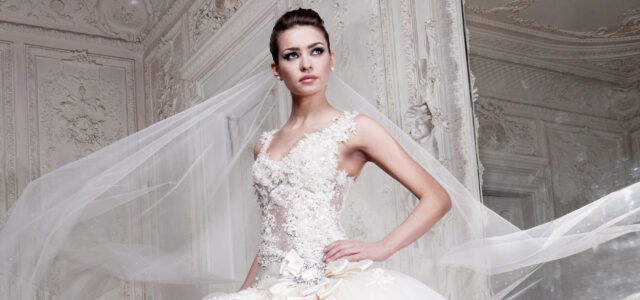
Wedding Belles
In this latest fashion column, fashion historian Scott William Schiavone takes a look at the history of the white wedding dress
The wedding dress has a rich and fascinating history that spans centuries. While today’s wedding gowns come in a myriad of styles and designs, the evolution of this iconic garment is a testament to changing societal norms, fashion trends and expressions of individuality.
The tradition of brides wearing special attire dates back to ancient times. In ancient Rome, brides wore bright colours like yellow or red, symbolising fertility and joy. However, it wasn’t until the mid-19th century that the white wedding dress gained widespread popularity.
The young Queen Victoria played a pivotal role in popularising the white wedding dress. In 1840, when she married Prince Albert, instead of following royal protocol and wearing her state robes, she decided to wear a stunning white gown made of silk satin, decorated with Honiton lace. Victoria’s choice a simple white dress captured the public’s imagination and set a trend that continues to influence bridal fashion today.
The symbolism of the white wedding dress as a representation of purity and virtue became deeply ingrained in Western culture. The trend spread beyond royalty and soon brides of all backgrounds were choosing white or shades of white for their wedding attire. The white wedding dress became a symbol of new beginnings, hope and the promise of a lifelong commitment.
In the early 20th century, bridal fashions followed the fashionable styles and silhouettes of the period. The Harris has a lovely wedding dress that was worn by Flora Sefton on her wedding day on the 26th December 1914. Made from satin and lace, the dress is designed in the fashionable style of the period. The veil that was worn with this dress is decorated with orange blossoms which were the traditional symbol of virtue and fertility. Flora was one of 400,000 women who married a soldier during World War I.
The 1920s brought the flapper era, with dropped waistlines and shorter hemlines. The 1930s and 1940s saw wedding dresses reflecting the economic constraints of the time, often made from practical fabrics and featuring simple designs. The post-World War II era witnessed a return to opulence and romance and the 1960s and 1970s brought a departure from the traditional with shorter hemlines, bold patterns, and a more relaxed approach to bridal fashion.
Of course, one of the most iconic wedding dresses in modern times is that of Princess Diana. Designed by David and Elizabeth Emanuel, the gown was a breathtaking masterpiece that captivated the world when Diana married Prince Charles on 29th July 1981. The dress featured a lavish 25-foot train adorned with lace, sequins, and 10,000 pearls. The silk taffeta gown itself boasted a romantic, fairy tale silhouette, with puffed sleeves, a fitted bodice and a voluminous skirt. During the 1980s, Diana’s dress was one of the most copied styles for blushing brides.
In recent years, bridal fashion has become more diverse than ever. Contemporary designers are not afraid to experiment with colours, textures, and unconventional silhouettes which allows brides to express their individuality.
Today, the wedding dress continues to evolve, reflecting the ever-changing landscape of fashion and culture. While some brides opt for the timeless elegance of a white gown, others choose vibrant colours, sleek modern designs and even unconventional alternatives like jumpsuits or separates.
The history of the wedding dress is a journey through time, a reflection of societal values and a celebration of the enduring institution of marriage. Say yes to the dress!
Scott William Schiavone is a fashion historian and Curator of Decorative Art at The Harris Museum and Art Gallery in Preston. Scott has worked with fashion and textile collections in museums across the UK. Scott has his own YouTube channel, Fashion &… and is an accredited lecturer for The Arts Society.
facebook.com/scottschiavonefashioncurator

